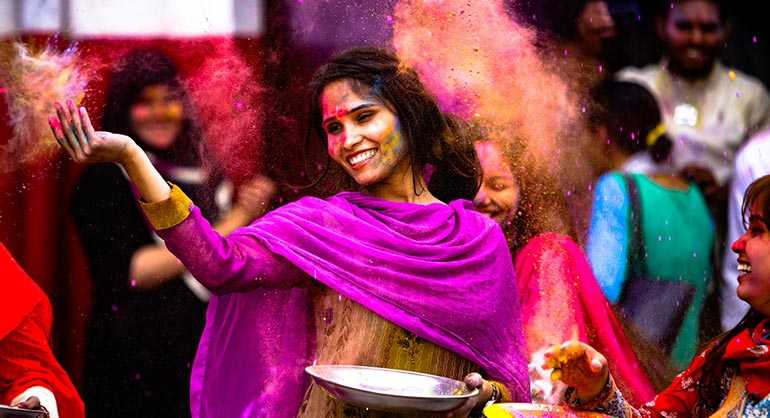A traditional Indian meal – whether eaten in the north, south, east or west – follows a very different pattern from that of Europe, the Mediterranean or the Far East. Starters are not always part of a meal, the meal is not served in courses and desserts are not necessarily served at the end. Often the meal will appear on the table ‘pre-plated’ in small bowls arranged on a thali (a large round plate or a clean plantain leaf), along with the staples bread and rice.

Crunchy snacks, such as Samosas or Onion Bhajiya, are enjoyed alongside the main dishes, which, for non-vegetarians, would be chicken, fish or mutton kebabs, or curry. Vegetarians often eat a main dish of paneer, mushrooms or seasonal vegetables. It is common to serve at least one dry dish and one dish with sauce. In addition, a dal, sambhar or karhi (yoghurt dumplings) is almost compulsory. Bread and rice are taken according to personal preference.

Dairy produce is included in the form of plain yoghurt or raita, and is indispensable in all but the most frugal fare. Chutneys, pickles and preserves accompany daily meals at home, ensuring that all the basic flavours are on offer as well as providing a variety of colours and textures.

A sweet dish, such as rice pudding or a serving of halwa is also offered. Beverages made with fruit juice added to milk, cream (or egg whites) is offered to guests before eating, although some drinks, such as buttermilk, are sipped during the meal.

The guiding principle of Indian meals is that they should be appropriate to the season and occasion. More elaborate celebratory banquets have much greater variety, including different kinds of fish, quail and partridge, and use more complex and uncommon recipes.

It is not unusual to mix and match dishes from different culinary zones: for example, Punjab tandoori tikka, Awadhi korma and Hyderabadi biryani could easily share the centre spread with Gujarati snacks, kerala breads and Bengali sweets. And in fact, except for ritual meals, most Indians mix and match at home. However, this should in no way inhibit an enthusiast from creating a regional menu that is deeply satisfying.
Finally, an Indian gourmet does not always use knives, forks and spoons: the fingers, assisted by variety of breads, are best to fully enjoy the temperature and texture of the food.





